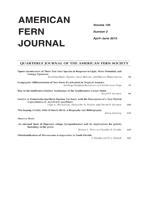The response to the canopy openness of species in tropical forests is a source of niche differentiation. The tree ferns Alsophila firma, Cyathea divergens and Lophosoria quadripinnata coexist in a cloud forest in Mexico; the first is abundant in creeks, the second occupies slightly open places, and the third prefers more open sites. We hypothesized that the distribution of these species would be correlated with their germination patterns. To test the hypothesis we evaluated the effect of light, water potential and canopy openness on spore germination. Spores were incubated under different light filters modifying red∶far-red ratio or light intensity, water potential was modified with polyethylene glycol solutions and distinct canopy openness were selected in the field. No germination occurred in darkness, and it was low under red light and far-red light; however, all species germinated at a very low photon flux density (PFD, 0.04 µmol m−2 s−1). The decrease of water potential from 0 MPa to −0.7 MPa reduced germination in all species, from 98.6% to 72.2% in L. quadripinnata, 66.4% to 18.9% in A. firma and 74.2% to 4.1% in C. divergens. The increase of the canopy openness reduced the germination capacity of the three species, but L. quadripinnata was the least affected. The germination requirements of the three tree fern species were partially related to the distribution of the sporophytes in the cloud forest.
How to translate text using browser tools
1 April 2015
Spore Germination of Three Tree Fern Species in Response to Light, Water Potential, and Canopy Openness
Karolina Riaño Ospina
ACCESS THE FULL ARTICLE

American Fern Journal
Vol. 105 • No. 2
April 2015
Vol. 105 • No. 2
April 2015
Alsophila
cloud forest
Cyathea
gap size
Lophosoria




